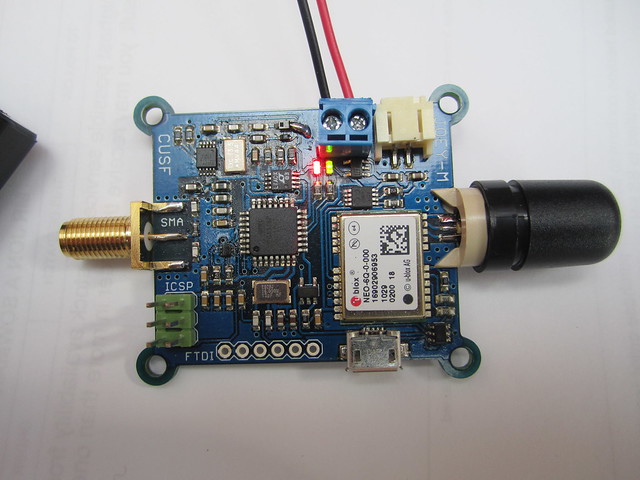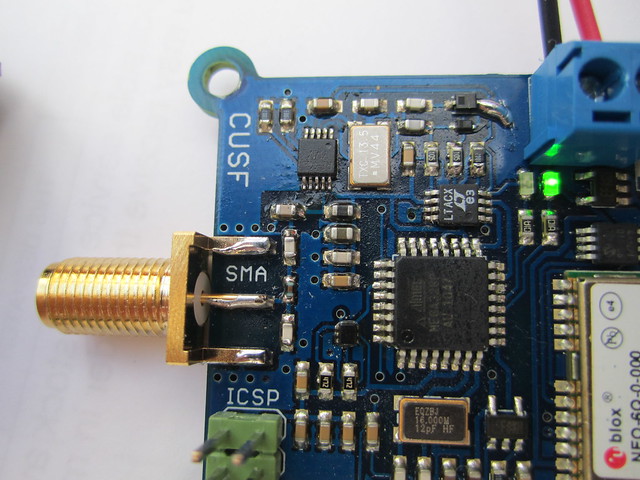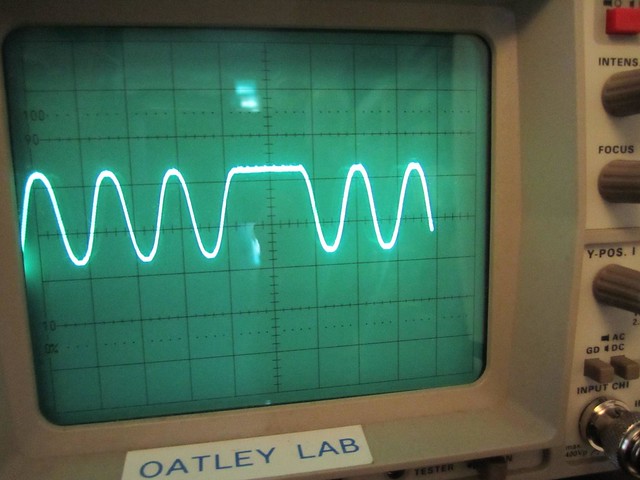The Joey-M flight computer was soldered up this week, all going fairly well apart from some minor rework required on some of the finer pitched components.

Joey-M uses the uBlox NEO-6Q GPS with a Sarantel SL1202 passive antenna, along with a small I2C EEPROM such that configuration can be retained when Joey is powered off. USB is broken out to a Micro USB connector such that configuration and debugging can be achieved via the excellent u-Center software from uBlox, and the configuration saved to EEPROM.

Joey-M uses the Micrel MICRF112 434MHz ISM band 10mW FSK transmitter with a twin varactor diode crystal pulling arrangement. Its 13.56MHz crystal has an 18pF capacitor on one side, and the varactor arrangement designed such that under no bias voltage, it also rests at 18pF.
One varactor has a large range of capacitance that allows the center radio frequency to be moved around by about 30kHz. The other varactor has a much smaller range, such that it can be used for very small shifts for FSK. Voltage is applied to the varactors by a twin 16 bit DAC from Linear Technology.
The radio stage of Joey-M is shown below:

To ensure a clean spectrum and thereby increasing the ability to decode, the modulator input waveform is digitally filtered in a Gaussian shape to provide GFSK. The step response of the order-50 Gaussian filter is stored in EEPROM on the AVR, and is written out to the DAC on each change of modulator input voltage. A trace of the modulator input at 300 baud is shown below:

A working firmware is currently running on Joey-M in preparation for a first flight this week. Later, temperature compensation for crystal frequency drift and more complex radio modes (MFSK) will be explored using the Joey-M platform.
Finally, thanks again to Cambridge Circuit Company for manufacturing these boards for us.